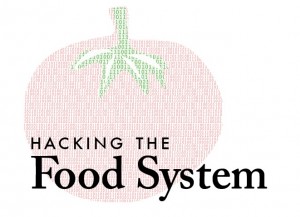[Hacking the Food System is an online conversation exploring how technology, information and data can change the food system status quo. Join the conversation below, on Twitter (hashtag #foodtech), or Facebook.]
We live in a backward world. A world where it is strange to know where our food comes from. Foods that are grown and processed without adulteration have to prove it, while the use of chemicals and manipulation do not have to be disclosed.
Information and technology on the other hand can contribute to a better food system by eliminating information asymmetry. It only takes a couple of times choosing something you know the provenance of to remind you that it is actually bizarre to NOT know the source of your food.
The only label that makes any difference to consumers in the status quo is USDA certified organic. Anything else is often confusing, unless people are already engaged and have a relatively sophisticated understanding of food and equally sophisticated purchasing habits.The organic movement originally relied on the idea of actually, physically knowing your farmer.
From the Wikipedia organic food entry:
Early consumers interested in organic food would look for non-chemically treated, fresh or minimally processed food. They mostly had to buy directly from growers: “Know your farmer, know your food” was the motto. Personal definitions of what constituted “organic” were developed through firsthand experience: by talking to farmers, seeing farm conditions, and farming activities. Small farms grew vegetables (and raised livestock) using organic farming practices, with or without certification, and the individual consumer monitored. As demand for organic foods continued to increase, high volume sales through mass outlets such as supermarkets rapidly replaced the direct farmer connection. Today there is no limit to organic farm sizes and many large corporate farms currently have an organic division. However, for supermarket consumers, food production is not easily observable, and product labeling, like “certified organic”, is relied on.
I believe that the internet can solve many of the difficulties in “knowing your farmer.” Much of the information asymmetry in food exists because a cost effective way to make information travel with the food hasn’t been applied. It is starting to happen in silos, for flour, for chocolate, and for wool, but soon the full power of the semantic web will be applied to food. Mobile pervasiveness is eliminating the boundary between offline and online, enabling seamless access to information. Open participation by all interested parties—whether consumers, producers or distributors—can democratize the sourcing, verifying and sharing of information.
By fostering direct connections and transparency, technology makes it possible for individuals, communities, developers and businesses to profoundly change our food system through new communications media.
______________
Anthony Nicalo has spent his career as a chef and entrepreneur dedicated to the notion that story should be a key ingredient in everything we consume. Every business he turns his hand to celebrates provenance – from provenir (Fr.) “the origin or source of something” – as the heart of what makes things good. Now Anthony is pouring that same passion for provenance into Foodtree, a global, participatory database of food sources and origins. His goal is to empower people to choose and eat foods that are better for us and our families, by helping us to know more about our food and its provenance.
Anthony is a founding member of the Slow Money Alliance. Follow him on Twitter at @tonynicalo.
Related articles
- Ali Partovi on Hacking the Food System: Focus on the Supply Chain (foodandtechconnect.com)
- Bill Niman on Hacking the Food System (foodandtechconnect.com)
- Will Turnage on Hacking the Food System: Re-Imagining Recipes With Data (foodandtechconnect.com)
- Nicola Twilley on Hacking the Food System: Crowdsourcing What & Where Angelenos Eating (foodandtechconnect.com)
- John Reinhardt & Bob Wall on Hacking the Food System: Going Viral (foodandtechconnect.com)
- Carl DiSalvo on Hacking the Food System: Reinvent Ag-Tech (foodandtechconnect.com)
- Nevin Cohen on Hacking the Food System: The Networked Future of Urban Agriculture (foodandtechconnect.com)





